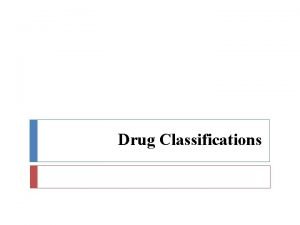Nitrous oxide emissions and grassland management Sren O

- Slides: 1

Nitrous oxide emissions and grassland management Søren O. Petersen Danish Institute of Agricultural Sciences, Research Centre Foulum, Denmark Box 1 CO 2 mitigation potential of managed grassland: An example Overview This poster describes a field study starting this year that will investigate sources, distribution and mechanisms behind nitrous oxide (N 2 O) emissions from grazed pastures. Carbon storage in grasslands has been proposed as a CO 2 mitigation option. However, the potential effect depends significantly on the fate of N inputs, since N 2 O derived from N turnover can partly or completely off-set the removal of atmospheric CO 2 (see Box 1). Nitrous oxide emitted from grazed pastures may originate from labile soil organic matter or from animal deposits. Any interaction between these sources will be evaluated by monitoring emissions and associated soil characteristics from white clover-ryegrass pastures of different age after a grazing period (see ’Grazing experiment’). The extreme heterogeneity of N 2 O emissions hampers quantification at the field scale. Focusing on the individual urine spot as a major source of N 2 O, the dynamics of N 2 O emissions and related changes in soil solution chemistry will be followed. The information may be used for modelling of emissions based on soil analyses (see ’Temporal dynamics of N 2 O emissions’). Nitrous oxide emissions may not be linearly related to N input via urine. It is hypothesized that high ammonia concentrations in urine spots may influence N 2 O emissions from nitrification and denitrification due to mechanisms such as C release from scorched plant roots and lysed cells, and microbial stress. This will be investigated in urine spots using PLFA analyses (see ’Urine composition and microbial stress’). Franzluebbers et al. (2000; Soil Biol. Biochem. 32: 469 -478) quantified C sequestration in different long-term pasture systems for a 30 -yr period. The carbon stored can be recalculated into CO 2 equivalents as shown below. Nitrogen inputs via inorganic fertilizer were also reported and, using the emission factor of 0. 0125 recommended by IPCC (1997) and a Global Warming Potential of 310 for N 2 O, this N input can similarly be recalculated into CO 2 equivalents. § Excretal returns are not included; the IPCC emission factor for N in excreta deposited during grazing is 0. 02. As the table indicates, N 2 O derived from fertilizers (and excreta) must be taken into account when C sequestration strategies are considered. Temporal dynamics of N 2 O emissions, soil solution chemistry (electrical conductivity, soil moisture [TDR], urea, inorganic N and dissolved organic C) will be followed on a daily basis in artificial urine spots. The dynamics of plant N uptake will be monitored by remote sensing. Urine will be collected during milking and diluted or amended as required (see ’Urine composition and microbial stress’). It will be attempted to develop a simple model relating N 2 O emissions from urine spots to soil parameters. Such a relationship would then be integrated into the grazing module of the whole-farm model FASSET (Jacobsen et al. , 1998; Dan. Inst. Agric. Fish. Econ. Rep. No. 102), which includes a dynamic creation of spatial heterogeneity in soil nutrient status by simulating urine and dung depositions (Hutchings and Kristensen, 1995; Grass Forage Sci. 50: 300 -313). Grazing experiment A selected experimental field (gray areas in the small drawing), currently used for a study of nitrate leaching in relation to pasture management, will be fenced to keep out cattle for 4 weeks, then opened for a 7 -d period. Soil characteristics (electrical conductivity, soil moisture [TDR], urea, inorganic N and dissolved organic C) will be monitored at the end of the grazing period in 33 sampling points as indicated below. Nitrous oxide emissions will be measured in 3 sampling points from each plot. The grazing experiment will be repeated in July-August in a different experimental field. 1 st year pasture 2 nd year pasture 8 th year pasture -1 5 g N kg urine, 2. 5 kg -1 5 g N kg urine, 5. 0 kg -1 10 g N kg urine, 2. 5 kg Urine composition and microbial stress It is well-known that plant roots may be scorched by urine deposition due to high levels of ammonia in the soil following urea hydrolysis. It is conceivable that ammonia is also a stress factor for soil microorganisms, including nytrifying and denitrifying bacteria. This may influence N 2 O emissions in a way that is not easily predicted. Nitrite oxidizers are typically more sensitive than ammonia oxidizers, and accumulation of nitrite is likely to increase N 2 O emissions. Selective stress effects could indirectly stimulate less sensitive organisms via a release of C from lysed cells. Depending on the extent of C release and the sensitivity of denitrifiers, this could increase or mitigate N 2 O production from this source. As a first attempt to investigate these questions, general stress indicators will be investigated by PLFA analyses, while specific effects on nitrification and denitrification may be reflected in the dynamics of soluble N pools. 10 m This study contributes to the Danish project ’Dinitrogen Fixation and Nitrous Oxide Losses in Organically Farmed Grass-Clover Pastures: An Integrated Experimental and Modelling Approach’, and to the FP 5 project ’Greenhouse Gas Mitigation for Organic and Conventional Dairy Production’ (MIDAIR).

